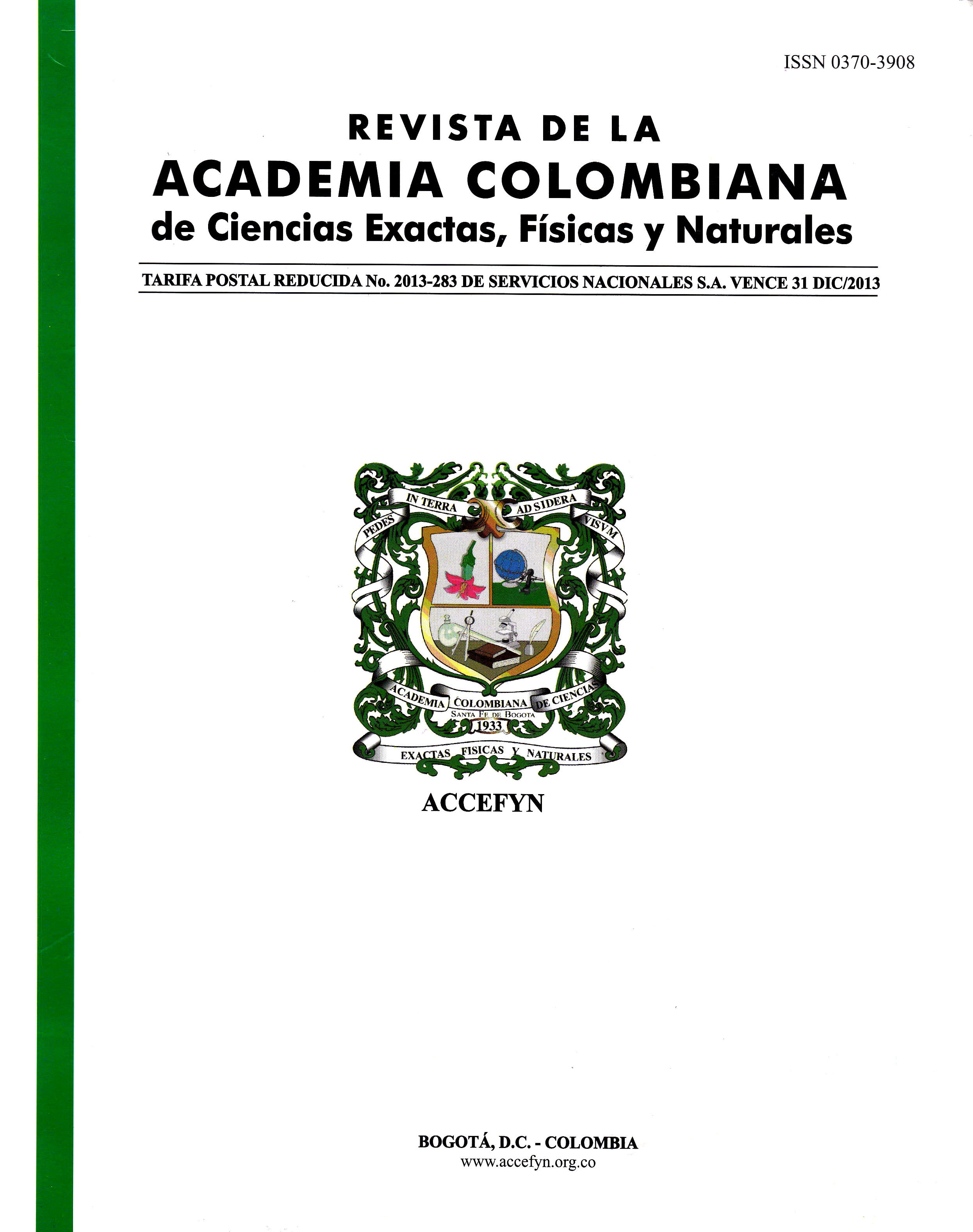Abstract
The active ingredient was quantified in pesticide products such as Ficam W, Aqua Reslin Super and T.M. Fos 1%G by chromatographic methods and physical properties were determined to verify compliance of World Health Organization (WHO) specifications. Additionally, the temephos content was compared with different trademarks of granular larvicides. Bendiocarb, s-bioallethrin and temephos concentrations met the requirement. The results of physical properties were outside of WHO specifications for testing wettability, persistent foam and sieve. In the granular larvicides compared,
Keywords
References
Australian Pesticides and Veterinarian Medicines Authority. Guidelines for the validation of analytical methods for active constituent, agricultural and veterinary chemical products [monografía en internet]. Kingston: Australian Pesticides and Veterinarian Medicines Authority, 2004 [consultado 2009 junio 6]. Disponible en: http://www.apvma.gov.au/publications/guidelines/docs/gl_69_analytical_method
Collaborative International Pesticides Analytical Council. 1985. “CIPAC Handbook vol.1C”. Marston Book Services Ltd. Abingdon, Oxfordshire. pp. 2230-2232.
Collaborative International Pesticides Analytical Council. 1988. “CIPAC Handbook vol. D”. Marston Book Services Ltd. Abingdon, Oxfordshire. pp. 10-12.
Collaborative International Pesticides Analytical Council. 1994. “CIPAC Handbook vol. F”. Marston Book Services Ltd. Abingdon, Oxfordshire. pp. 152-153, 164-166, 173-176, 205-206, 394-398.
Collaborative International Pesticides Analytical Council. 2006. “CIPAC Handbook vol. L”. Marston Book Services Ltd. Abingdon, Oxfordshire. pp. 31-37.
Collaborative International Pesticides Analytical Council. 2009a. Guidelines on method validation to be performed is support of analytical methods for agrochemical formulations [monografía en internet, consultada 2009 agosto 29] Disponible en: http://www.cipac.org/documentGuidance%20Documents/validat.pdf
Collaborative International Pesticides Analytical Council. 2009b. “CIPAC Handbook vol. M”. Marston Book Services Ltd. Abingdon, Oxfordshire. pp. 155-158.
eurachem Working Group. 1998. “The fitness for purpose of analytical methods”. Teddington: LGC Ltd. FAO/WHO Joint Meeting on Pesticide specifications. Manual on development and use of FAO and WHO specifications for pesticides [monografía en internet]. Roma: World Health Organization and Food and Agriculture Organization of the United Nations, 2006 [consultado 2009 septiembre 22]. Disponible en: http://whqlibdoc.who.int/publications/2006/9251048576_eng_update2.pdf
Jhang Js, Chang CC, Fink DJ, Kroll MH. 2004. “Evaluation of linearity in the clinical laboratory”. Archives of Pathology and Laboratory Medicine. pp. 128:44-48.
Organización de las naciones unidas para la Agricultura y la Alimentación. Código internacional de conducta para la distribución y utilización de plaguicidas [monografía en internet]. Roma: FAO, 2006 [consultado 2009 enero 21]. Disponible en:http://www.fao.org/ag/AGP/AGPP/Pesticid/Code/Down-load/MonitoringSpanish08.pdf
tholen DW, Kroll MH, Rex-Astles J, Caffo AL, Happe tM, Krouwer J, et al. 2003. “Evaluation of the linearity of quantitative measurement procedures: A Statistical Approach; Approved Guideline. Pennsylvania: Clinical and Laboratory Standards Institute; vol.23.
WHO Pesticide Evaluation Scheme. Quality control of pesticide products; guidelines for national laboratories [monografía en internet]. World Health Organization, 2005 [consultado 2009 julio 25]. Disponible en: http://whqlibdoc.who.int/hq/2005/WHO_CDS_WHOPES_GCDPP_2005.15.pdf
WHO Pesticide Evaluation Scheme. Sampling procedures [monografía en internet]. World Health Organization, 1999 [consultado 2009 mayo 17]. Disponible en: http://www.who.int/whopes/quality/en/methodm1.pdf
World Health Organization. Global strategic framework for integrated vector management [monografía en internet]. Geneva, World Health Organization, 2004. [consultado 2009 marzo 21]. Disponible en: http://whqlibdoc.who.int/hq/2004/WHO_CDS_CPE_PVC_2004_10.pdf

This work is licensed under a Creative Commons Attribution-NonCommercial-NoDerivatives 4.0 International License.
Copyright (c) 2023 Revista de la Academia Colombiana de Ciencias Exactas, Físicas y Naturales





